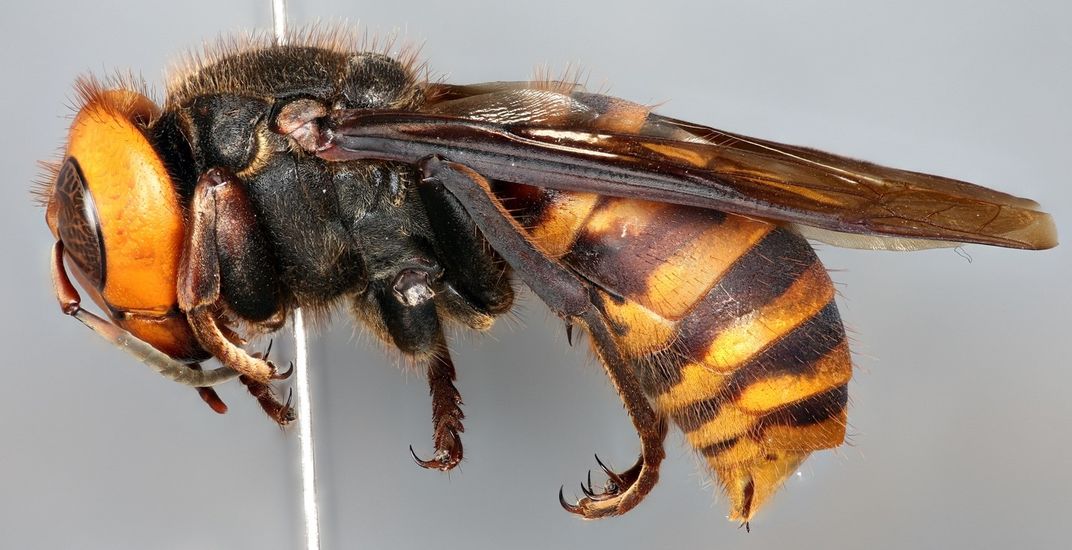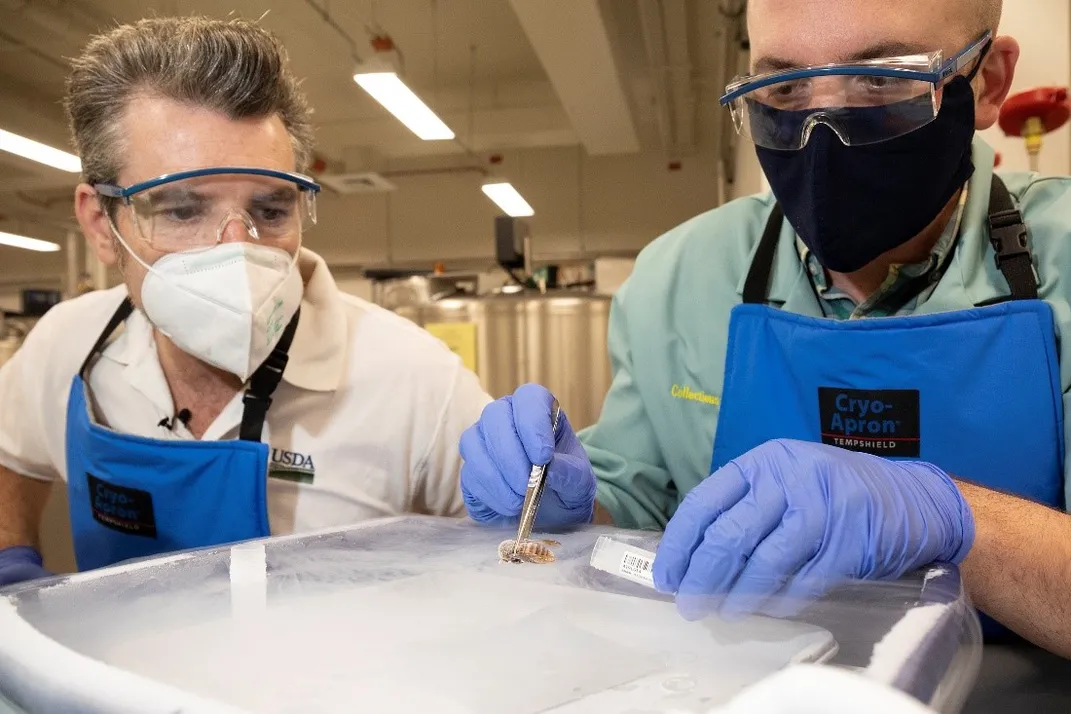NATIONAL MUSEUM OF NATURAL HISTORY
Family Members Follow Original Asian Giant Hornet to Smithsonian
Scientists plan to analyze the hornets’ DNA to learn more about the invasive species’ mysterious arrival.
/https://tf-cmsv2-smithsonianmag-media.s3.amazonaws.com/blogging/featured/Hornet_specimens_pinned_to_styrofoam_in_boxes..jpg)
The Asian giant hornet, Vespa mandarinia, first appeared in the United States over a year ago in a small area of Washington state after having been discovered in nearby Canada earlier in 2019. Entomologists have been hunting for the elusive nests of this species ever since.
In October, Washington State Department of Agriculture and United States Department of Agriculture (USDA) found and eradicated the United States’ “nest zero” by creating a lure to capture live hornets and then attaching radio transmitters to follow them back to the nest. Once the nest was discovered, the entomologists captured more hornet specimens in different life stages.
Some of these specimens made their way to the Smithsonian’s National Museum of Natural History last Tuesday, where they were then immediately transferred for storage in the Biorepository — a massive collection of cryogenically preserved samples available as a resource for all scientists studying Earth’s biodiversity. Next, Smithsonian Institution researchers and USDA Agricultural Research Service (ARS) scientists plan to analyze the hornets’ DNA to learn more about the invasive species' mysterious arrival.
“Now that we have these freshly collected specimens, we can do sophisticated genetic work on how many populations there might be out there and what region they might come from in Asia,” said Dr. Matt Buffington, a research entomologist at the ARS’ Systematic Entomology Laboratory who works with the National Insect Collection.
Answering these questions could help Buffington and his colleagues understand how the Asian giant hornet snuck into the United States. Tracing its path might allow them to anticipate similar invasive events in the future.
Invasion of the hornet specimens

Although they flew to fame with the nickname “murder hornet,” it’s not likely that Asian giant hornets will kill people in the United States. However, the species’ spread in North America could potentially devastate colonies of European honeybees, important pollinators for countless crops in the United States.
Entomologists plan to genetically test the new hornets from nest zero to anticipate the invasive species’ spread. The earlier (and first Asian) giant hornet found in the United States is already pinned in the National Insect Collection.
“The pinned collection is essentially a database of insect diversity in the United States through time and space. It’s a way to document what was and is here,” said Buffington. “Pinning works for morphological research but studying hornets’ genomes requires a different type of preservation.”
The new specimens from nest zero will be stored cryogenically at a low temperature to prevent tissue decay and degradation of the DNA. Also, the samples include larvae, pupae, workers and queens, which means they represent the species’ entire genetic life cycle. Studying them could reveal important information about nest zero’s genetic diversity across generations.
“One of the nice things about getting multiple specimens like this is it gives us a handle on the things we haven’t found yet. For example, based on the combinations of DNA in these samples, we can see how many nests there might be as the drones and queens that mated to produce them would likely have been from different populations and nests,” said Dr. Floyd Shockley, Collections Manager in the museum’s Department of Entomology.
From nest zero to nest subzero

In the coming months, Buffington and colleagues from both the Smithsonian and USDA will begin to sequence the new specimens’ DNA at the Laboratories of Analytical Biology (L.A.B.). Their first priority is understanding how the hornets ended up in the United States.
“The amazing aspect of this collection, both pinned and in the Biorepository, is the fact that the Smithsonian is in it for the long haul,” said Buffington. “Having that kind of resource, well, you can't even put a price tag on it.”
Much like the National Insect Collection’s pinned samples, the Biorepository functions as a long lasting, albeit much colder, database for the global scientific community. Both are dedicated resources co-curated by Smithsonian entomologists, USDA scientists, and staff from the Army’s Walter Reed Biosystematics Unit, managed for researchers today and in the future.
“It’s a great example of how the Smithsonian collections are used in conjunction with museum and USDA scientists to mobilize data,” said Shockley.
Related Stories:
Notorious Asian Giant Hornet Finds Home in Smithsonian
Five Species to Wrap Up Invasive Species Week
Digitization Allows Public Access to Smithsonian’s Hidden Collections

